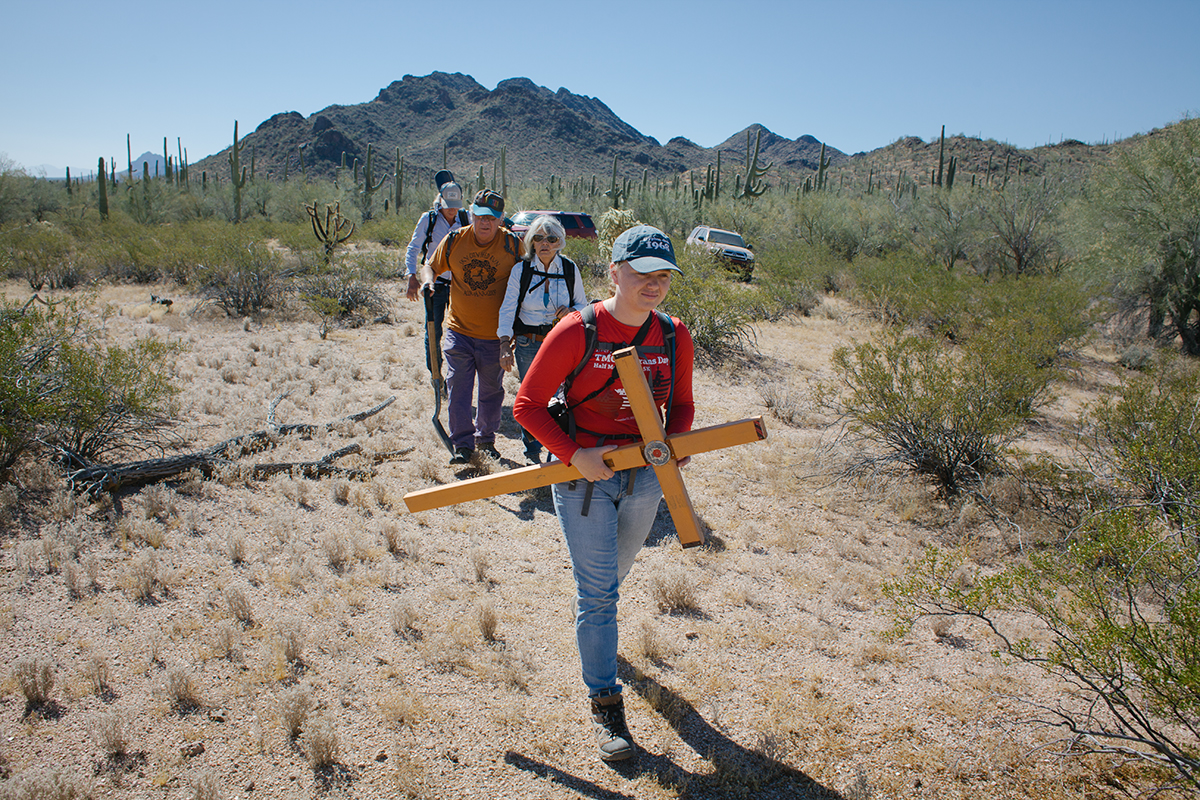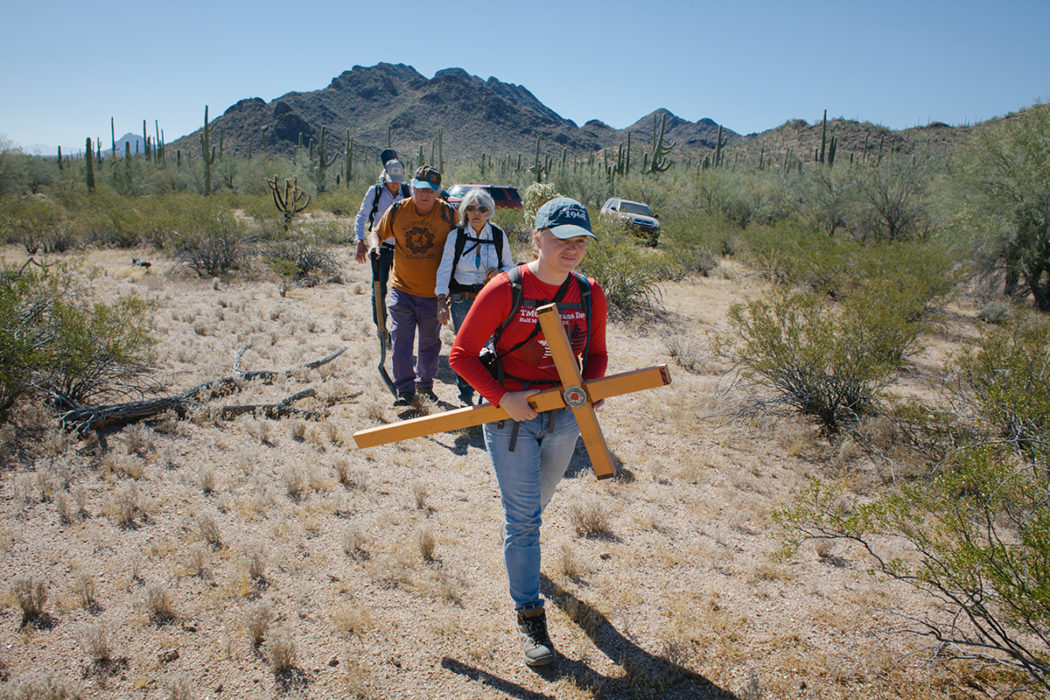
Alvaro Enciso was racing the sun. After loading up two four-wheel-drive trucks with gear and a team of volunteers early on a June morning, the 73-year-old, Colombian-born artist sped north out of Tucson toward the Ironwood Forest National Monument. For the past six years, Enciso has been going into Arizona’s Sonoran Desert to place handmade crosses where the bodies of migrants traversing the United States-Mexico border have been recovered. On this day, Enciso was hoping to finish his work before the heat that has taken so many lives settled in.
While much attention is paid to the throngs of people seeking asylum at designated ports of entry, many still choose to elude authorities by traveling through the desert. This, of course, exposes them to risks — heat stroke, dehydration, hypothermia — that can be fatal. The U.S. Border Patrol reported 283 migrant deaths in 2018 and 3,558 in the last decade. Those are just the bodies agents have recovered; the University of Michigan anthropologist Jason de León estimates the actual death toll is five to 10 times greater.
Enciso’s project is titled “Donde Mueren Los Sueños” (“Where Dreams Die” in English), and he has placed over 900 crosses in the desert. “What I’m doing is marking locations where the American dream went bad for someone, where it ended,” he said. “A person that never made the news or the newspaper, but that person had a name and a family and dreams and plans and hopes. There’s a lot of my own thinking about migration [in the work] because I’m a migrant. … I was one of the lucky ones.”
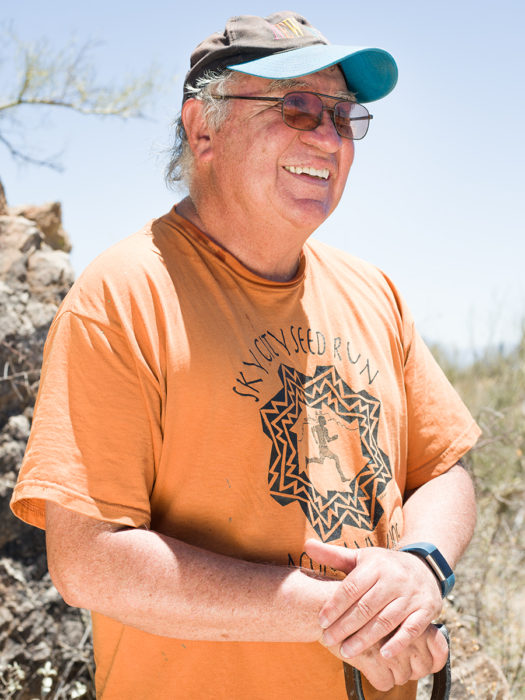
Enciso’s own American dream began when an aunt married a U.S. citizen. He felt there was no future for him in Villavicencio, the town southeast of Bogotá where he grew up, so Enciso begged his aunt to take him in; he joined her in the U.S. in 1965. Shortly after, Enciso was drafted into the Army and served a combat tour in Vietnam.
“That saved my life,” Enciso said. He learned English in the Army, and toward the end of his tour became a combat photographer, picking up skills he would put to use back in New York City. Later, he put himself through college with the help of the GI Bill.
After a 21-year career with the Department of Health and Human Services, Enciso retired and immersed himself in art history and philosophy. He wanted to interrogate the notion of the American dream and his own cultural identity in an adopted country. “I will never be a full-time gringo,” he said. “There were people always reminding me that, but at the same time, I’m beginning to lose my Hispanic [identity]. So I am neither one or the other — I live in this vacuum.”
In 2011, Enciso started volunteering with the Tucson Samaritans, a humanitarian group that leaves food and water in the desert for people crossing the border. As he became aware of the prevalence of migrant deaths, Enciso decided to create art that would speak to the situation on the ground.
“The Sonoran Desert is a beautiful place. People come from all over the world to photograph it. But they don’t know that this beautiful landscape has a secret to tell … that this desert has been weaponized,” Enciso said.
When he saw maps that displayed migrant deaths with red dots, the idea for his art project began to materialize.
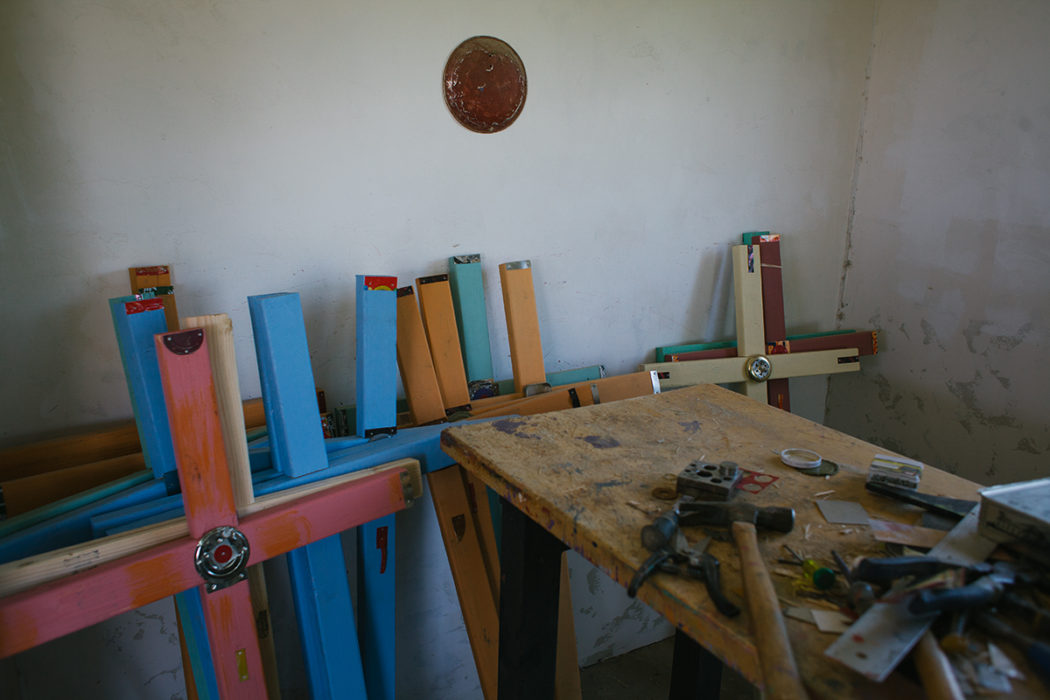
Using maps provided by the Pima County coroner’s office, the U.S. Geological Survey, and various NGOs, chooses a new spot in the desert each week where the remains of a migrant have been found, and places a single cross in that location. Originally, Enciso wanted to avoid using crosses because of the Christian symbolism, but he eventually found himself separating his medium from its religious connotations.
“I started thinking of the crosses as a geometrical equation. It’s a vertical line and a horizontal line,” he said. “When we are alive, we are vertical, and when we’re dead, we are horizontal. Those two lines have to meet somewhere. When they cross … to me, that’s the point where the poor migrant meets the giant from the north.”
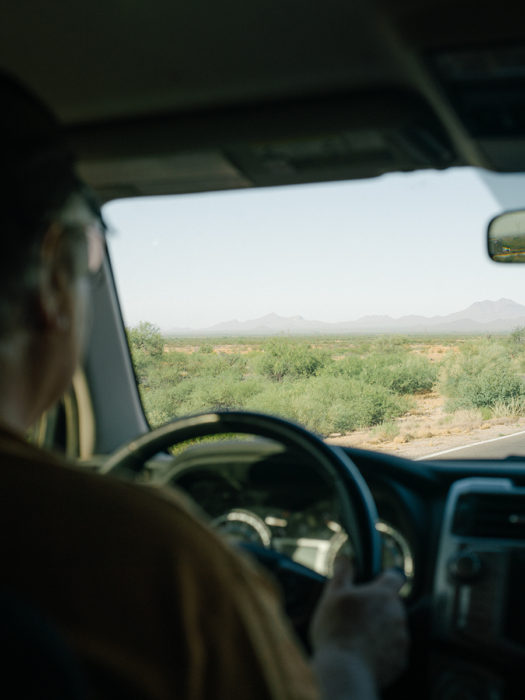
That morning in June, Enciso led his small convoy off the freeway onto country roads that quickly turned to dirt as they entered Ironwood Forest. Enciso had not been in this area in a couple of years, but he guessed that about 50 of his 900-plus crosses have been placed in and around the national monument. His plan that day was to place one cross for an unidentified migrant whose body was recovered in January, and to replace another cross that had gone missing.
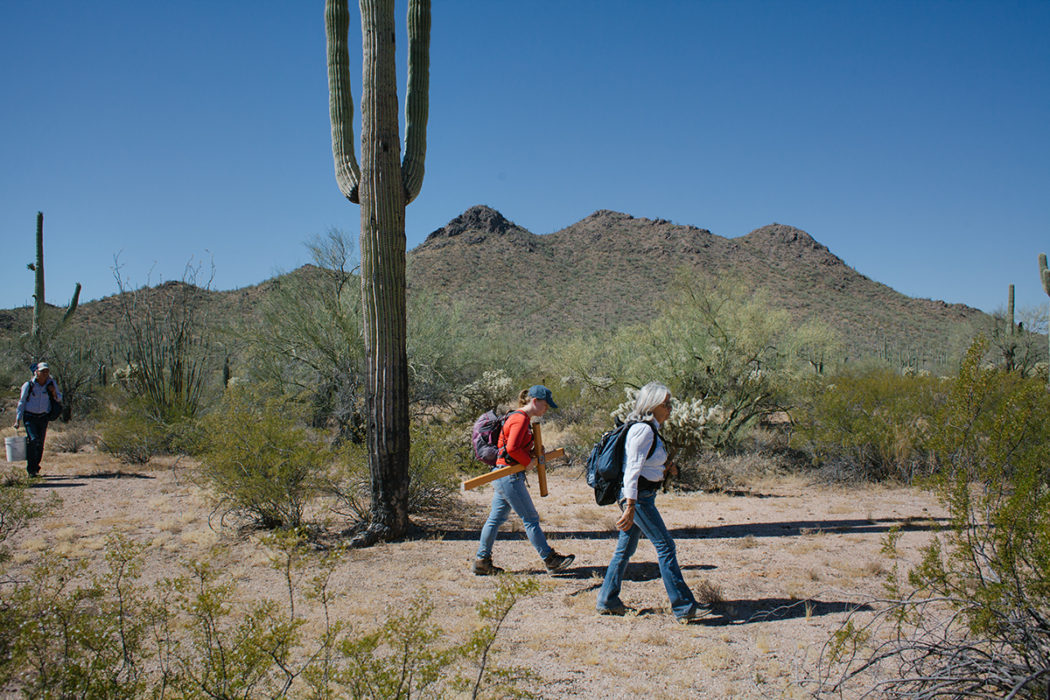
Placing the crosses is a simple affair. Once the location is found, all that is needed is a shovel, a bucket, some quick-dry cement, water, and the cross. The volunteers took a few extra gallon jugs of water to leave near the marker for anyone who should happen upon the site.
This migrant’s body was recovered not far from the road, so the team only walked for a few minutes. They took care to avoid the multitude of spiny plants and cacti.

At the site, Enciso started digging. After a few minutes of fussing with the cross to make sure it was straight, a couple of volunteers poured concrete and some water. Then they piled rocks around the cross’ foundation to hold it in place.
Since this cross was placed for a person who was never identified, Enciso instructed the others to search for anything that might help identify the body. One of the volunteers discovered some bones next to what appeared to be a pair of jeans. It was not clear whether the bones were from a human, but the volunteers marked the location and took photographs to send to a medical examiner; they haven’t heard back.
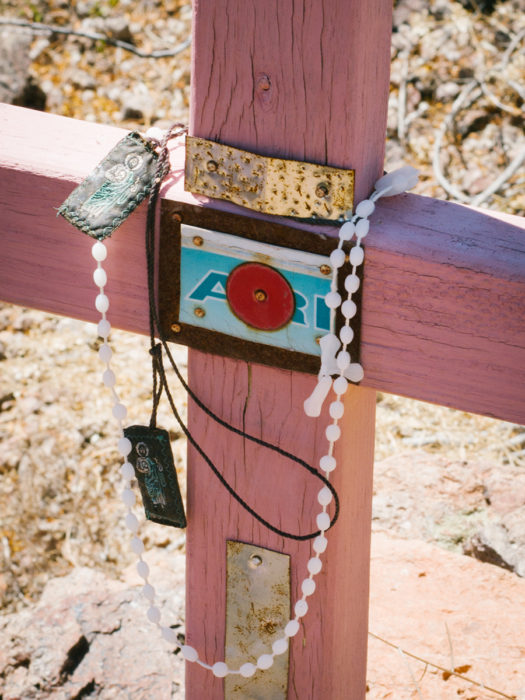
After stopping to look at one cross that had been turned into a shrine by migrants, the team continued driving. At the next stop, they replaced the missing cross where Juan M. Sandoval had died. Sandoval was 46 years old when he succumbed to hypothermia while crossing the desert. His body was recovered on June 6, 2017. After his remains were repatriated, Sandoval’s family reached out to Enciso and asked that he place a cross in Sandoval’s memory.
Enciso knows crosses will go missing or deteriorate. “The cross is not what’s important. This project is the idea, the performance,” he said. “The cross is nothing more than the container to bring the little red dot out there … and for me to give [the migrant a] presence.”

